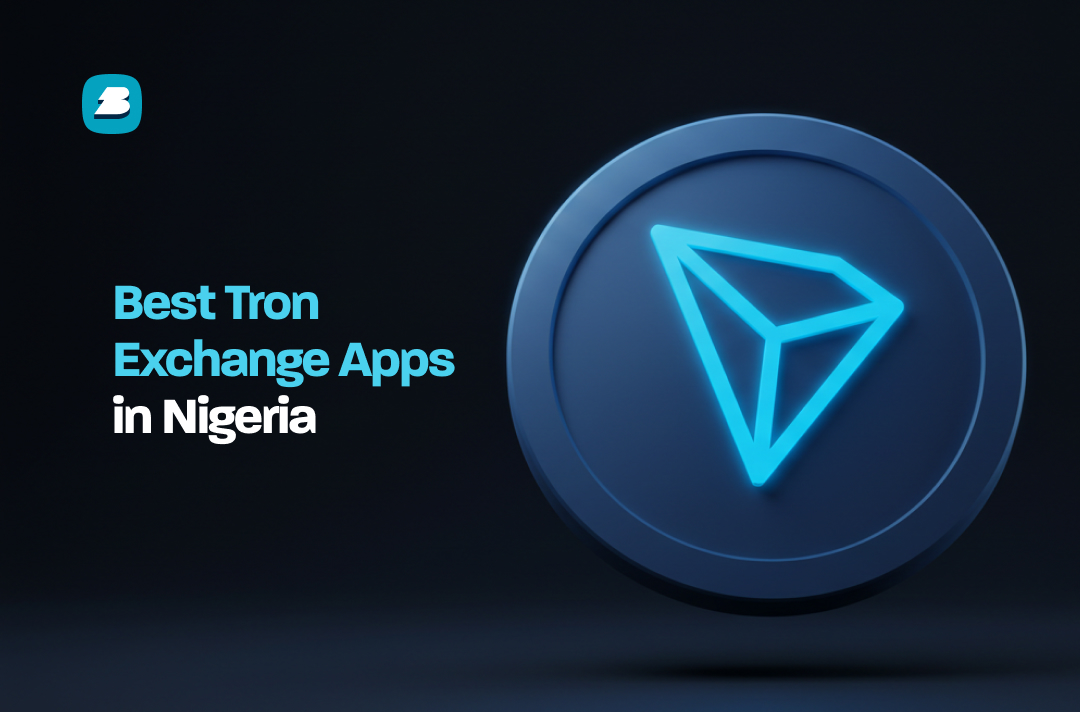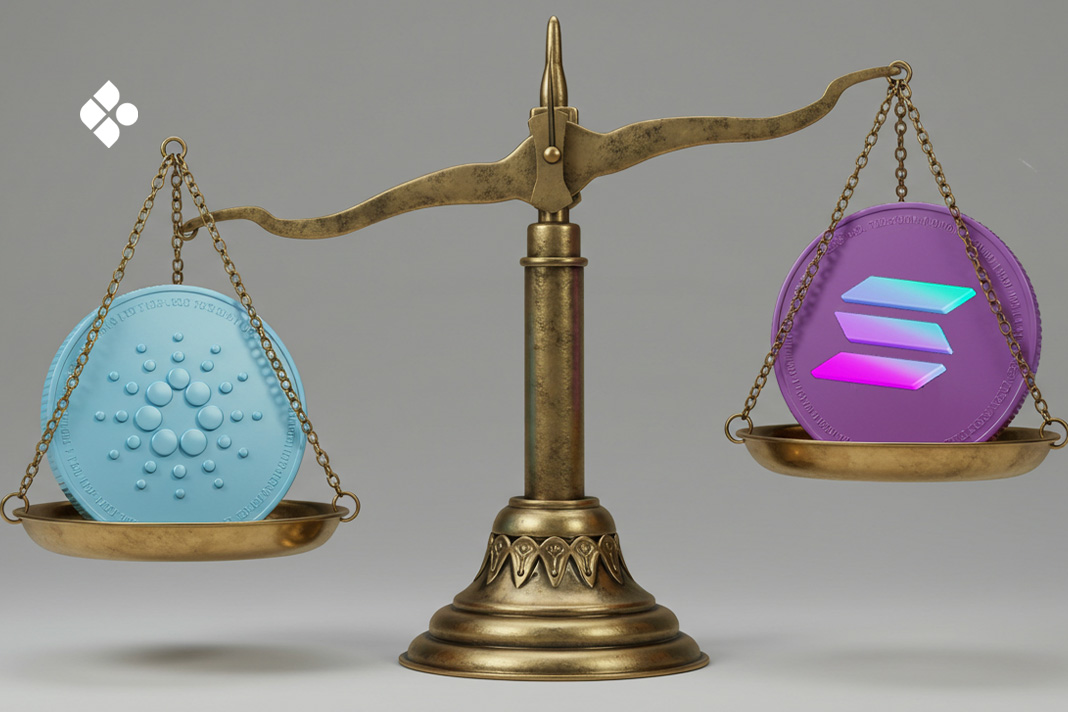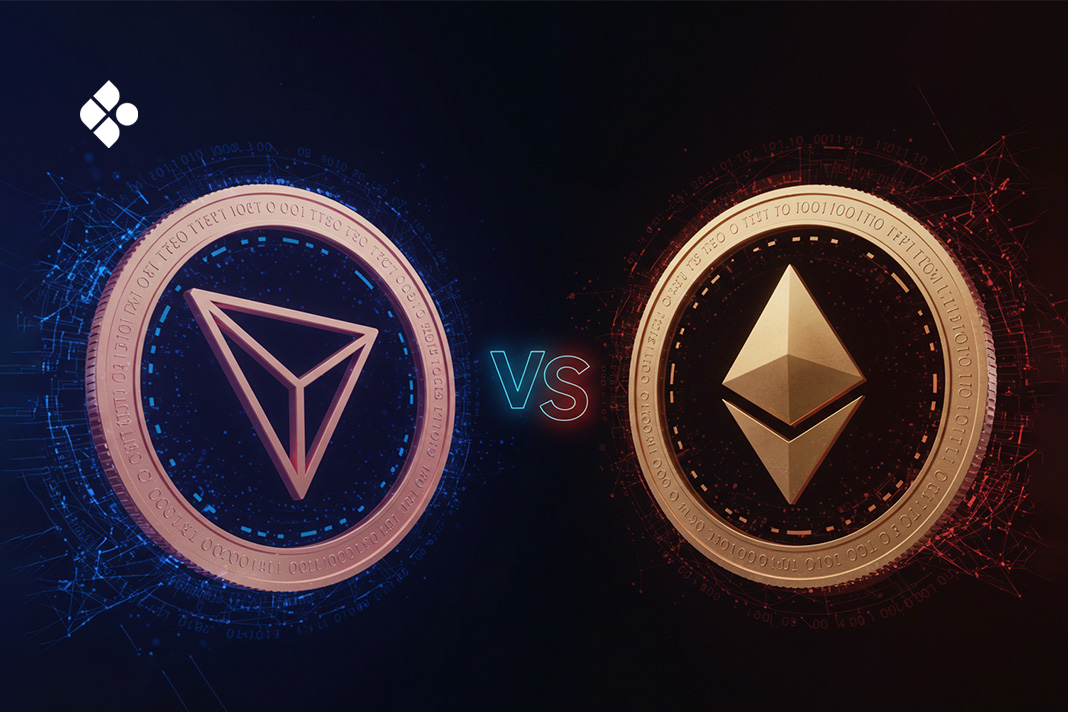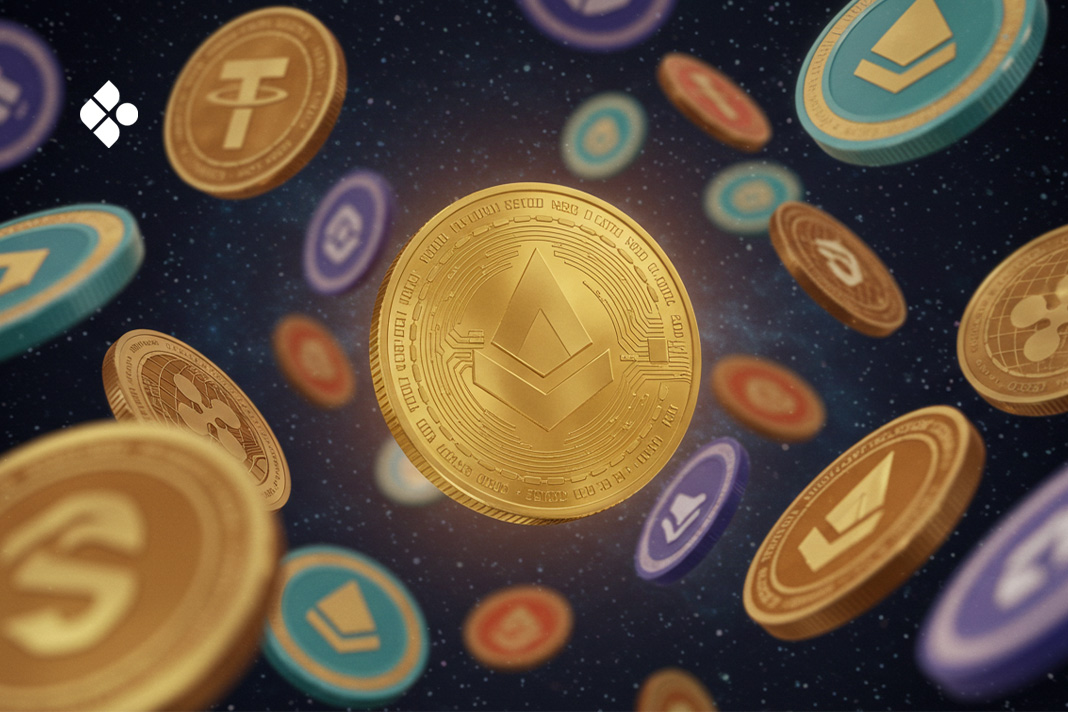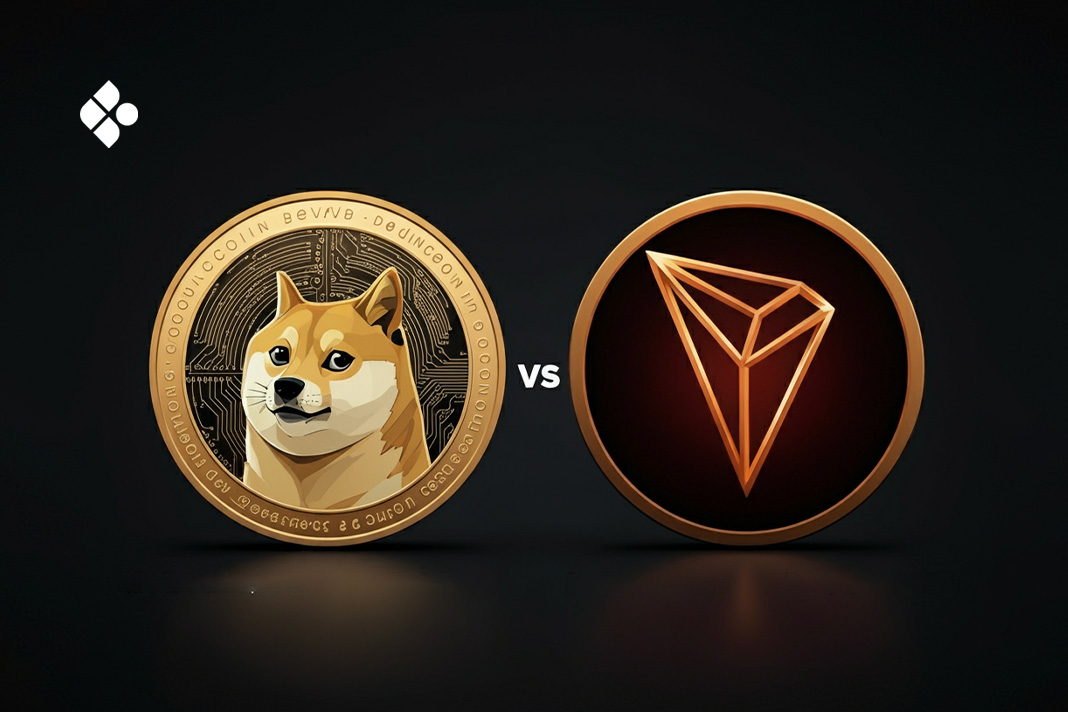Transaction fees are an essential component of any financial system. In the blockchain ecosystem, they take different forms and structures. It could be the typical transaction fee structure on popular networks like Bitcoin and Litecoin, the gas fee structure on Ethereum, or the more unique network resource-based structure on TRON network.
Notably, over the years, Ethereum and TRON have cemented their place as the top networks regarding transaction fee volume. Therefore getting to understand Ethereum’s fee structure, how it leads to high gas costs, and the low, more predictable transaction fees on TRON is important in your crypto and decentralized finance (DeFi) journey.
What Are Blockchain Transaction Fees?
A blockchain fee is the amount an initiator of a transaction pays miners to validate that transaction on the blockchain network. This is an important aspect of blockchain technology, and these fees are usually affected by factors such as network congestion and the complexity of the transaction being initiated.
Notably, blockchain fees are usually paid in the native cryptocurrency of the network being used. For instance, fees for all transactions on the Ethereum network are paid in ETH, fees on the TRON network are paid in TRX, and fees for all tokens on the BNB Smart Chain network (BSC) are paid in BNB.
However, with new technology like fee abstraction, a subset of chain abstraction, transaction fees may now be paid with assets other than the network’s native token.
TRON’s Fee Structure

The TRON network implemented a unique, modular approach to its blockchain fee system, which improved the network’s scale and ensured fees remained small and transaction finality was achieved quickly. TRON’s fees are calculated at the lowest level using three main resources: Bandwidth, Energy and TRX.
Bandwidth is the primary transaction fee resource on TRON. It is the unit with which the transaction size is measured. Transactions on the TRON network are stored in byte arrays. The size of this array corresponds to the amount of bandwidth to be consumed for fees. This means if the array size of a transaction is 100, 100 units of bandwidth will be used for the fees of that transaction. Each day, all active TRON addresses receive 1500 bandwidth.
Energy, on the other hand, is used to measure the computational power needed by the TRON virtual machine (TVM) to perform more complex transactions. Unlike bandwidth, it can only be obtained by staking TRX. They are used in complex operations like interacting with dApps or calling smart contract functions in a DeFi platform. However, transactions that require energy to compute still need bandwidth to broadcast to the blockchain.
TRX is the native currency of the TRON network. While it is not directly used to pay for transaction fees on the network, it is used to buy energy or bandwidth to pay for transactions or staked in a Delegated Proof of Stake (DPoS) system to acquire them over time. The more TRX you stake, the more energy and bandwidth you get.
In summary, when sending a transaction on TRON, the network first checks if you have sufficient bandwidth points from staking TRX. If not, it checks whether the free daily bandwidth points are enough to cover the transaction byte array. If that’s not enough either, you’ll then have to buy TRX at the rate of 0.001 TRX per bandwidth to pay for the transaction.
Ethereum’s Gas Fees Structure
Unlike TRON’s fee system, Ethereum makes use of gas fees, measured in Gwei, to pay for both transaction fees and smart contract interactions. A portion of gas fees, known as the priority fee, is paid directly to the validators in the Ethereum network as incentives for validating transactions and maintaining network security.
Interestingly, Ethereum gas fees are hugely affected by transaction supply and demand, which is why they are incredibly high during periods of network congestion. Following the merge and Ethereum’s transition to Ethereum 2.0, the network shifted from a Proof-of-Work (PoS) mechanism to a Proof-of-Stake (PoS) mechanism to improve the network’s scalability.
This positive development affected the way gas fees are calculated on the Ethereum network. Ethereum uses a dynamic fee structure introduced by EIP-1559, which consists of “Base Fee” (a mandatory fee that adjusts based on network congestion), “Priority Fee” (An optional fee that incentivizes miners/validators to prioritize transactions) and “Max Fee” (the maximum amount a user is willing to pay for the transaction).
The gas fee for a transaction is calculated as follows: Units of Gas Used * (Base Fee + Priority Fee). For example: If Base Fee is 20 Gwei, Priority Fee is 5 Gwei and Gas Limit is 21,000 (for a standard ETH transfer): Total Fee = (20 + 5) × 21,000 = 525,000 Gwei = 0.000525 ETH. Thus, if ETH price is at $3,000, the fee would be: 0.000525 × 3,000 = $1.57.
For more complex transactions, like interacting with smart contracts, the gas limit could be much higher (e.g., 200,000 gas for an ERC-20 token transfer), leading to higher fees.
Side by Side Comparison of TRON’s and Ethereum’s Fee Structures
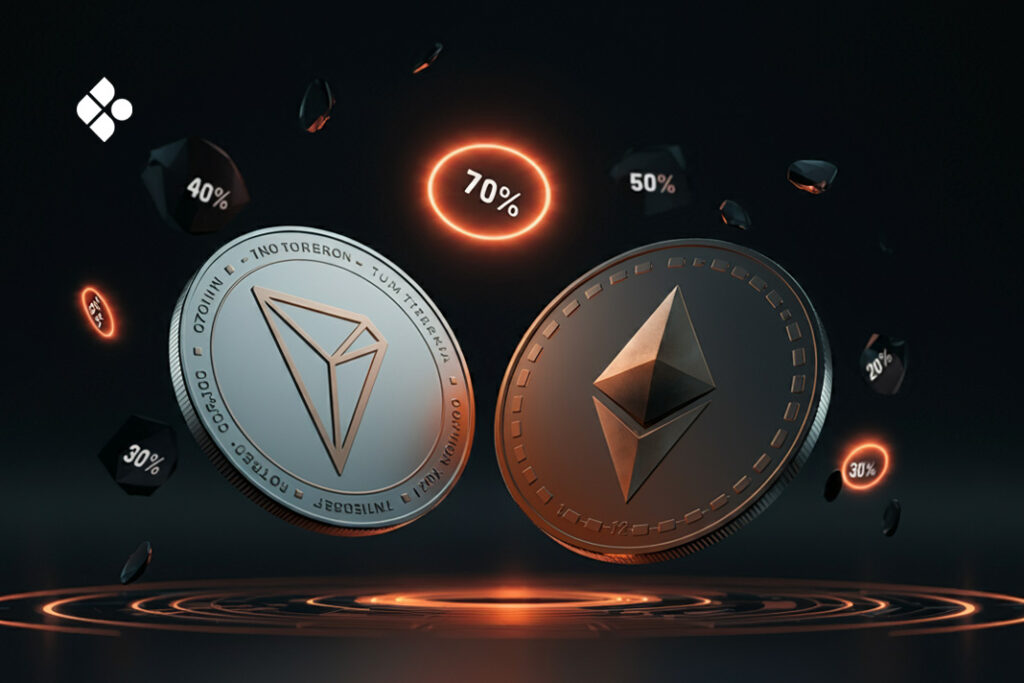
Considering that Ethereum and TRON basically dominated transaction fee volume last year with over 88% share of all transaction fees on-chain, it is safe to say that both networks are at the forefront regarding transaction processing.
Despite that common denominator, they are, however, fundamentally different in many different categories. Here’s a one-to-one comparison of their fee structure parameters:
Fee Model (Tron vs. Ethereum)
- TRON: TRON’s fee model is driven by the availability of its resources (bandwidth, energy, and TRX). Bandwidth is used for simple transactions like transfers, and bandwidth + energy are used for smart contract interactions. When a user runs out of these resources, they can stake or burn TRX to get more.
- Ethereum: Ethereum fees for both simple transactions and smart contract interactions are paid in units of Ethereum, which is Gwei. The gas price is dynamic and changes based on transaction complexity and network congestion/ transaction supply and demand.
Transaction Speed (Tron vs. Ethereum)
- TRON: The delegated proof of stake mechanism and its unique transaction fee structure make TRON one of the fastest blockchain networks, with 2000 transactions being validated per second.
- Ethereum: Ethereum is significantly slower due to scaling issues and network congestion. It validates around 12-15 transactions every second.
Transaction Cost (Tron vs. Ethereum)
- TRON: Transactions are free, if network resources like bandwidth and energy are available. If not, they will usually incur minimal costs from buying those resources with TRX.
- Ethereum: Transactions on Ethereum can cost anywhere from a dollar to $100 depending on the complexity of the transaction, network congestion and transaction priority. You can also monitor current Ethereum gas costs on etherscan’s gas tracker.
Network type (Tron vs. Ethereum)
- TRON: TRON makes use of the Delegated Proof-of-Stake mechanism.
- Ethereum: Ethereum initially used the Proof-of-Work mechanism until the merge. Ethereum2.0 now uses the Proof-of-Stake model.
Staking (Tron vs. Ethereum)
- TRON: Staking is an important part of TRON’s network. Users earn bandwidth and energy by staking TRX, which can then be used to facilitate TRON’s no-fee model.
- Ethereum: While staking is unnecessary for gas fee payment, validators still have to stake ETH to participate in the network security and validation process.
Role of Transaction Fees in a Blockchain Network

Transaction fees are an important component of every blockchain network. The following are the two main roles of transaction fees:
- Network Security: Transaction fees are used to incentivize network validators, who maintain the integrity of the blockchain network. They achieve this by ensuring each transaction is validated to be genuine before broadcasting it to the blockchain network.
- Spam Prevention: Attaching a fee to each transaction helps discourage spammers from flooding the network with multiple and excessive transactions, which can cause congestion and, thus, increased fees.
- Supporting Blockchain Sustainability: For blockchains that reduce or eliminate block rewards over time such as Bitcoin, where mining rewards halve every four years, transaction fees become the primary economic incentive for network participants, ensuring the network remains functional in the long term.
- Prioritizing Transactions: Users can pay higher transaction fees to get their transactions processed faster. Since miners and validators prioritize transactions with higher fees, this creates a competitive market where users can choose how quickly they want their transactions confirmed.
Frequently Asked Questions: TRON vs. Ethereum’s Gas Costs
How is the transaction fee calculated in the blockchain?
Transaction fees are calculated in many different ways depending on the blockchain network. On many networks, however, some of the factors that usually influence its actual cost are transaction complexity, transaction priority and network congestion. On the Ethereum network, transaction fees are calculated using the formula: Units of Gas Used * (Base Fee + Priority Fee). On TRON, the transaction fee is covered by bandwidth and energy units.
How long can a transaction be pending on the blockchain because of fees?
This, again, depends largely on the blockchain network.
Transactions on TRON generally take less than a minute to finalise. On Ethereum, it typically takes a few minutes. However, it can take significantly longer if the gas price is set too low, providing insufficient incentive for a validator to pick up the transaction or if the network is congested.
What is the gas fee for sending Ethereum?
Gas fees on the Ethereum network are dynamic and depend on several factors, including the price of Ethereum at that point. Typically, the gas fee for sending ETH is 21,000 gas units, which is equivalent to 0.00042 ETH. However, it can also vary widely from this point, depending on network congestion and transaction priority.
Why are Ethereum gas fees so expensive?
Ethereum wasn’t initially built to scale, which quickly led to problems associated with network congestion and increased fees. However, the transition to Ethereum 2.0 and the introduction of Layer 2s aim to reduce these gas fees by tackling the network congestion problem.
Which is better for developers: TRON or Ethereum?
This depends on the type of app the developers aim to build. TRON scales really well and processes transactions quickly, making it ideal for blockchain platforms that prioritise speed, like games. Ethereum, however has a much larger developer pool, thus, more development tools and frameworks, especially for platforms that prioritise security and decentralisation, such as DeFi platforms.
Conclusion
Ultimately, comparing TRON and Ethereum’s fee structures boils down to what matters most to you. TRON excels at low fees and quick transactions, making it ideal for decentralized applications that need speed, scalability, and multiple smart contract calls without breaking the bank. Gas fees on Ethereum can get rather expensive, but it offers better security and a much larger developer community, which is invaluable for development teams building really complex solutions.
So, Ethereum or TRON? For now, the decision really depends on what you’re building whether it’s the need for speed and cost-efficiency or a more secure, expansive ecosystem for DApps.
Want more easy-to-understand crypto guides?
Visit the Breet blog for tips, news, and helpful breakdowns made just for you.
Conclusion
Ultimately, comparing TRON and Ethereum’s fee structures boils down to what matters most to you.
TRON excels at low fees and quick transactions, making it ideal for decentralised applications that need speed, scalability, and multiple smart contract calls without breaking the bank.
Gas fees on Ethereum can get rather expensive, but it offers better security and a much larger developer community, which is invaluable for development teams building really complex solutions.
So, Ethereum or TRON? For now, the decision really depends on what you’re building whether it’s the need for speed and cost-efficiency or a more secure, expansive ecosystem for decentralised applications.

